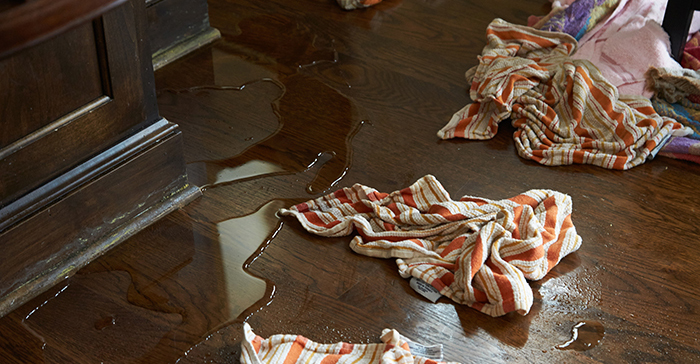Just how to Prevent a Water Damaged Bathroom
Check Us OutHow do you feel on the subject of How to Prevent Bathroom Water Damage?

The shower room is very susceptible for wet build-up as well as potential water damages because of the regular use water in it. This post offers straightforward examination methods to help identifying water damages risks.
The frequent use water in the restroom makes it exceptionally prone for moist buildup and possible water damages. By inspecting it consistently, you can minimize water related problems.
The complying with collection of assessments is easy to do and need to be done when in every 3 months in order to keep your bathroom healthy and to stop potential water problems triggered by the bath tub, the shower, pipe joints and also plumbing, sinks, cupboards, and also the bathroom
Do not forget carrying out these examinations as well as be detailed while doing them. Remember that these easy examinations can save you a great deal of money by supplying very early indicators for water damages
Bathtub as well as Shower
The shower and also bathtub need unique attention as well as upkeep. Check the ceramic tiles and replace if fractured. Make sure that there is no missing cement between the ceramic tiles. Evaluate and change fractured caulking at joints where the walls satisfy the flooring or the bath tub. Blocked drains pipes and also pipes issues will certainly prevent the tub from drying out and also may suggest severe troubles beneath the tub. Talk to a specialist instantly to avoid architectural damages. Take note of discolorations or soft locations around the bath tub wall surfaces as they might indicate an interior leakage.
Plumbing
Signs for water damages are tough to detect because many pipelines are mounted inside the wall surfaces.
Pay unique focus to flooring and walls wetness as well as discolorations as they might indicate an invisible plumbing issue. Inspect wetness levels in adjacent spaces too.
Sinks and also Cabinets
Sinks as well as cupboards are subjected to wetness as well as moisture day-to-day and also are usually forgotten. Inspect regularly under the sink and on the countertop above it. Repair any drip in the trap as it may suggest drain problems. Look around the sink, slow-moving draining pipelines might show an obstructed drain. Replace sink seals if they are broken or loose.
The Toilet
The toilet is a susceptible water joint. Check the water lines and look for leakages around the commode seat, in the tube, and also under the water storage tank. If you find any type of indicators of dampness on the floor around the toilet, check for leakages in the toilet edge and also storage tank seals.
Know that hanging toilet bowl antiperspirants raises the possibilities for blockages.
Water Damage Signs In The Bathroom To Avoid Cleanup
Musty smell
This is one of the easiest signs to catch because musty smells are so odorous. The damp, earthy, moldy smell should be a big red flag. The smell will develop when moisture gets trapped in surfaces, and begins to facilitate mold growth. Leaking pipes under cabinets, inside walls, and behind shower fixtures will cause moisture to stay trapped and not dry, which will lead to mold growth and spread. As soon as you notice any musty smells in your bathroom, have it checked for hidden water damage and cleanup signs.
Visible mold
If the smell isn’t there to give it away, sometimes you will actually see mold growth. Finding mold in your bathroom is a serious problem, because mold is very harmful to your health. By the time mold growth is visible, it also means that water damage has already occurred and been present for some time. The only way the mold problem can be resolved is to find the source of the moisture and get it stopped. To safely and adequately remove mold, you need to have professionals handle the remediation. Do not waste any time in getting mold problems addressed, fixed, and sanitized so that you can protect you and your family from the many respiratory symptoms caused by mold exposure.
Damaged floors
Bathroom floors should be able to withstand some exposure to water while still remaining in good condition. However, when excess exposure or water leaks occur, they will begin to damage even the most water-resistant flooring. If you notice any cracking, bubbling, staining, or warping on your bathroom floors, there is probably a water leak somewhere causing the distortion. If you notice areas of the floor have become softer, or even have a spongy feeling, there is probably damage to the subfloor. Subflooring is typically made up of plywood. When plywood is exposed to water or moisture, it will absorb it. Once it has become saturated, the weight of the excess water will cause the wood to swell and soften. Check the floors in your bathroom frequently to catch any of these sings before they lead to damaged subflooring.
Changes on walls
When water leaks behind walls, it will cause changes in the drywall. Peeling plaster, blistering paint, and soggy wallpaper are all good indicators that excess water is building up behind the wall. Water leaking behind drywall will cause it to swell and be soft to the tough. If you start to notice gaps along the trim of your walls, or where tile meets the wall, it could also be a strong indicator that there is a leak behind the wall. Any changes, distortion, or damage on the walls should be evaluated as soon as you notice it to prevent further water damage and cleanup.

Hopefully you enjoyed our excerpt about Looking for Signs of Water Damage in the Bathroom. Thank you so much for taking a few minutes to browse our short article. Sharing is good. Helping people is fun. Thanks a bunch for your time. Kindly come by our blog back soon.
Appointment